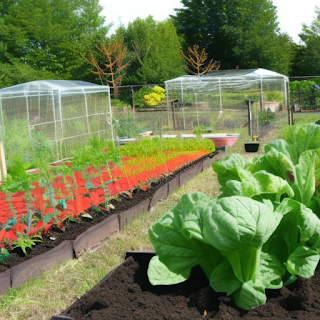Spring is the perfect time to start planning your backyard garden, and there are plenty of delicious vegetables that can be grown in New England during this season. Here are 15 options to consider:
- Arugula: This leafy green is easy to grow and adds a spicy kick to salads and sandwiches.
- Asparagus: Asparagus takes a few years to mature, but it’s worth the wait. Plant crowns in well-draining soil and provide plenty of sunlight.
- Beets: Beets are a cool-season vegetable that can be grown from seeds or seedlings. They prefer well-draining soil and should be watered regularly.
- Carrots: Carrots are a popular choice for backyard gardens, and they can be grown from seeds directly in the ground. They prefer well-draining, loose soil and should be watered regularly.
- Cabbage: Cabbage is a hardy vegetable that can be grown from seeds or seedlings. It prefers cool weather and well-draining soil.
- Kale: Kale is a nutritious leafy green that is easy to grow and can withstand cool temperatures. It can be grown from seeds or seedlings and prefers well-draining soil.
- Lettuce: Lettuce is a cool-season vegetable that can be grown from seeds or seedlings. It prefers well-draining soil and should be watered regularly.
- Peas: Peas are a cool-season vegetable that can be grown from seeds directly in the ground. They prefer well-draining soil and should be watered regularly.
- Radishes: Radishes are a fast-growing root vegetable that can be grown from seeds directly in the ground. They prefer well-draining soil and should be watered regularly.
- Spinach: Spinach is a nutritious leafy green that can be grown from seeds or seedlings. It prefers well-draining soil and should be watered regularly.
- Swiss chard: Swiss chard is a leafy green that is easy to grow and can withstand cool temperatures. It can be grown from seeds or seedlings and prefers well-draining soil.
- Turnips: Turnips are a root vegetable that can be grown from seeds directly in the ground. They prefer well-draining soil and should be watered regularly.
- Radicchio: Radicchio is a type of chicory that adds a bit of bitterness to salads and sandwiches. It can be grown from seeds or seedlings and prefers well-draining soil.
- Rhubarb: Rhubarb is a perennial plant that takes a few years to mature, but it’s worth the wait. It prefers well-draining soil and should be watered regularly.
- Scallions: Scallions, also known as green onions, are a fast-growing vegetable that can be grown from seeds or seedlings. They prefer well-draining soil and should be watered regularly.
With these 15 vegetables, you’ll have a variety of tasty options to choose from for your spring backyard garden. Happy planting!










